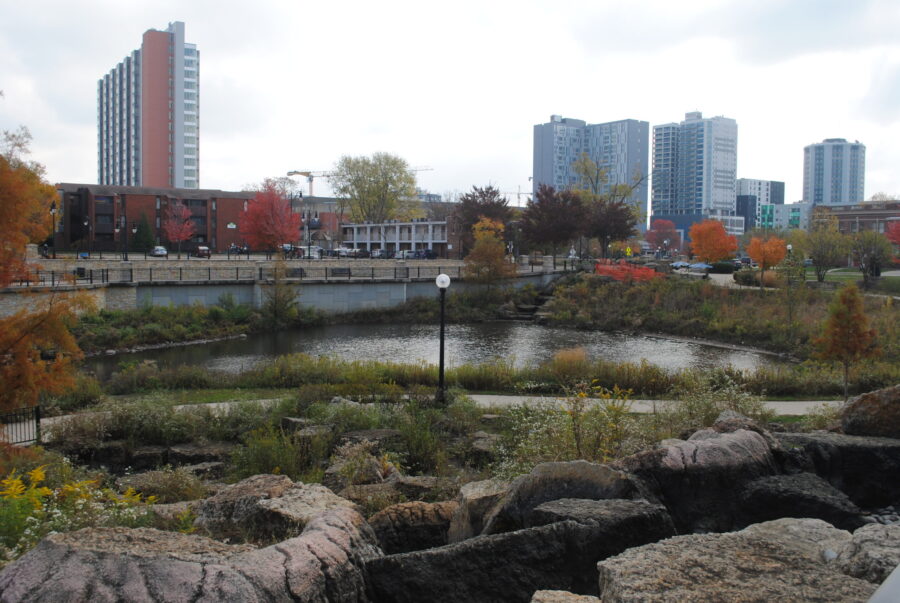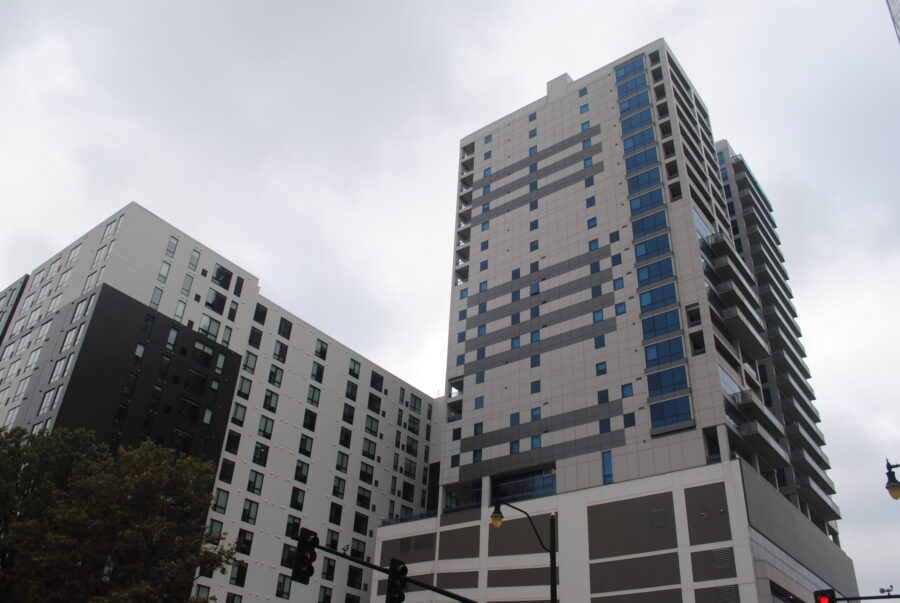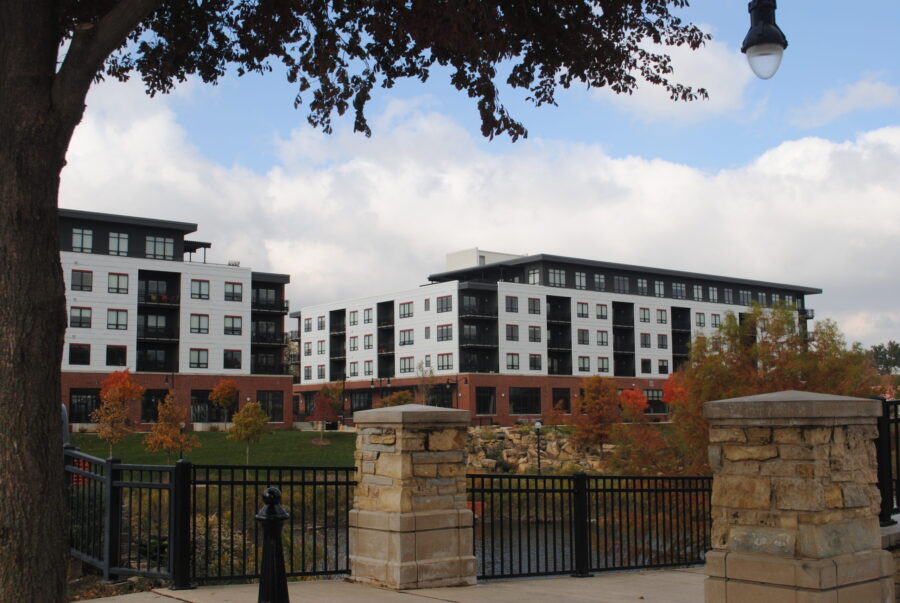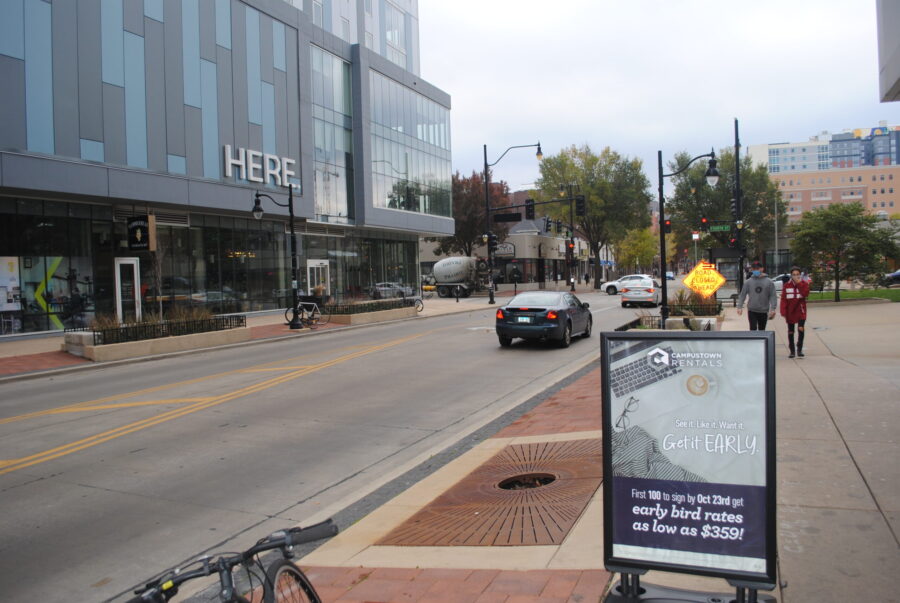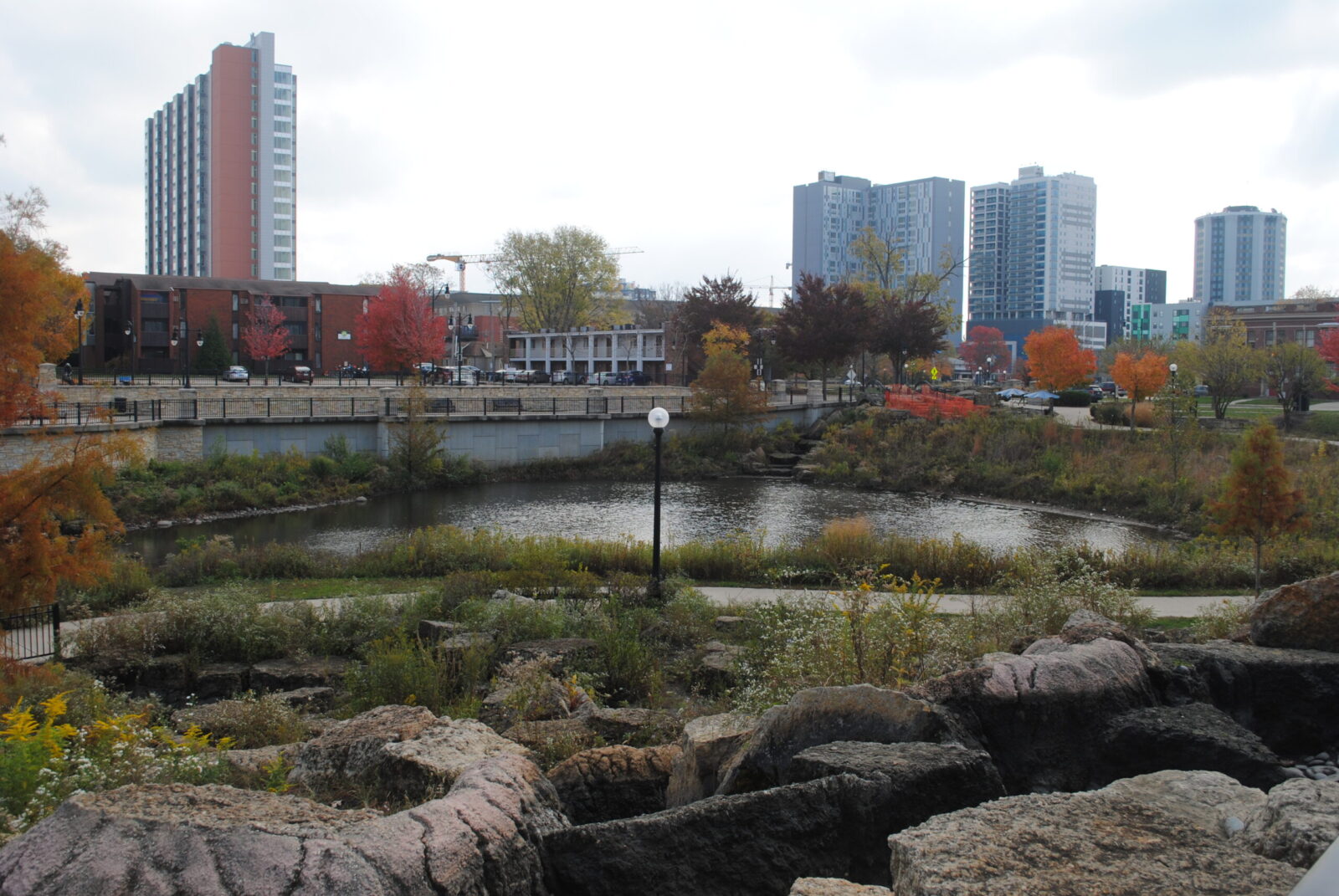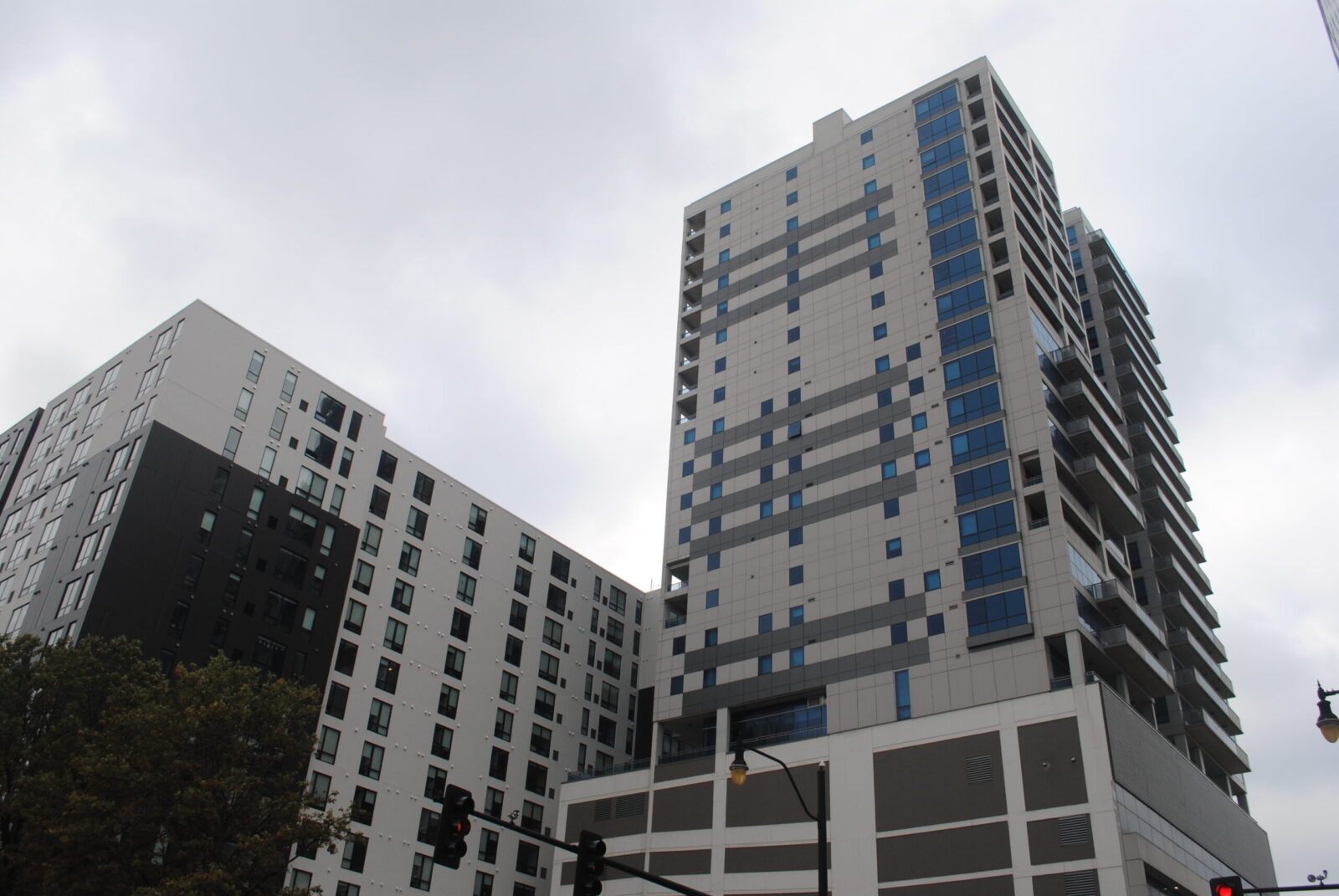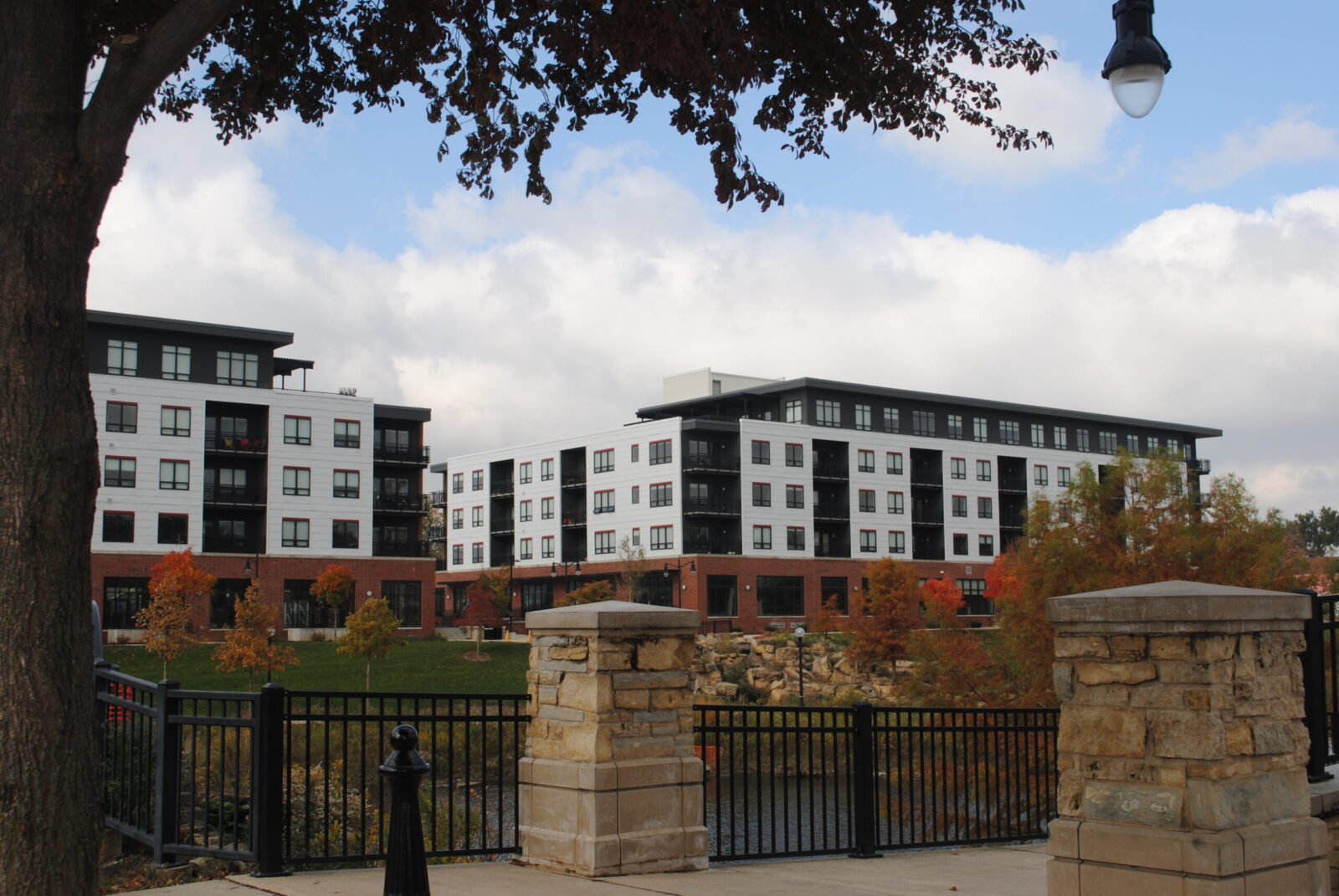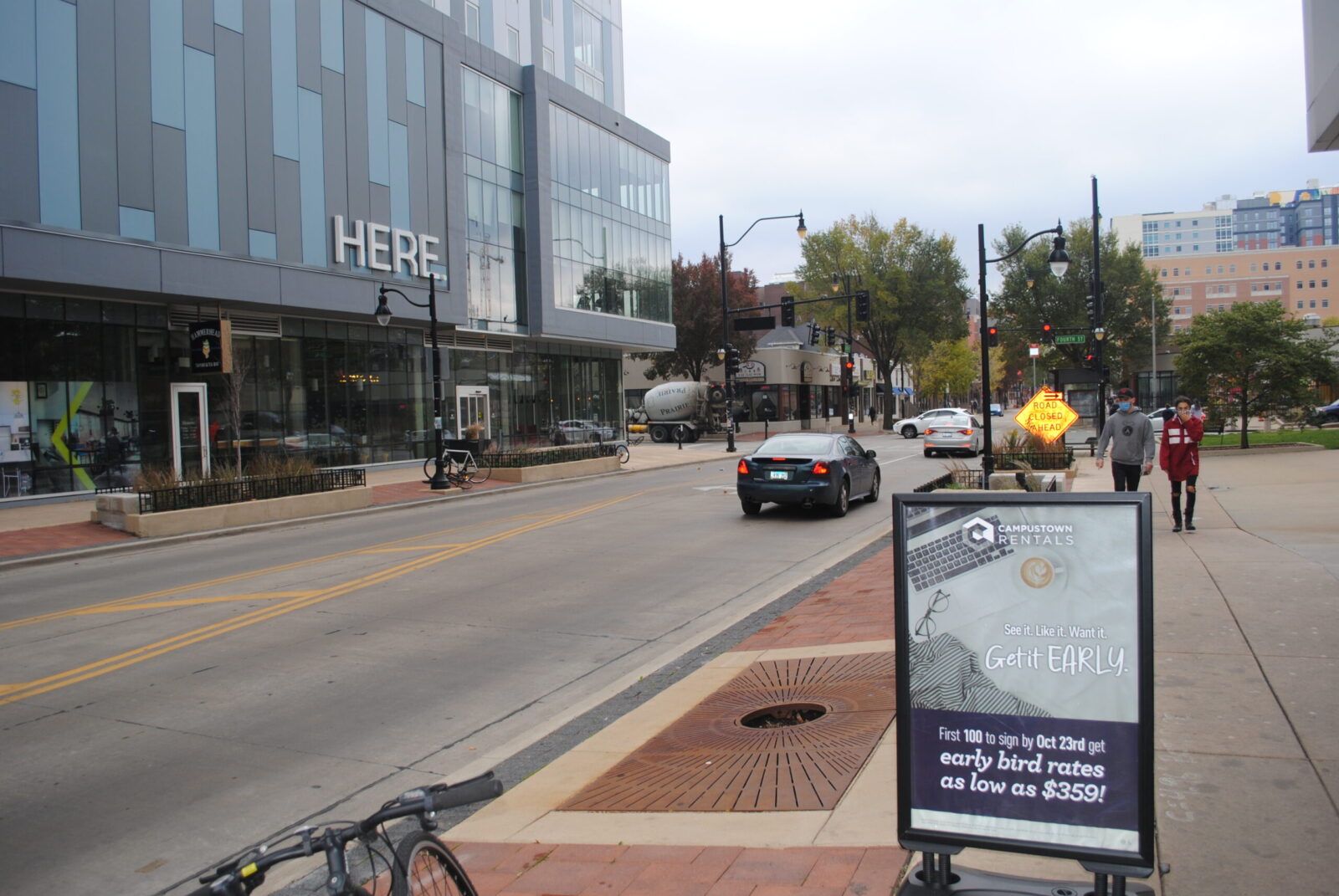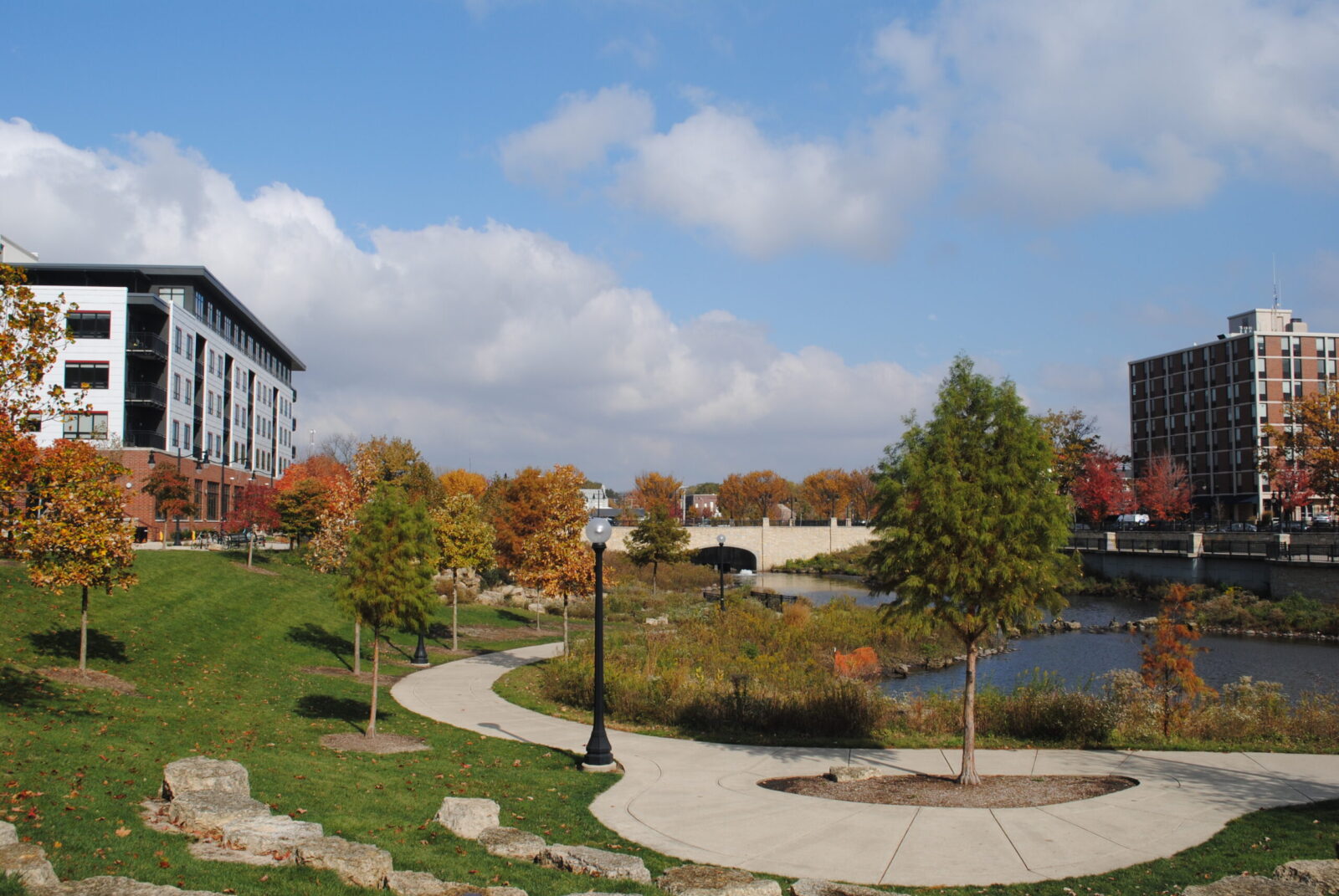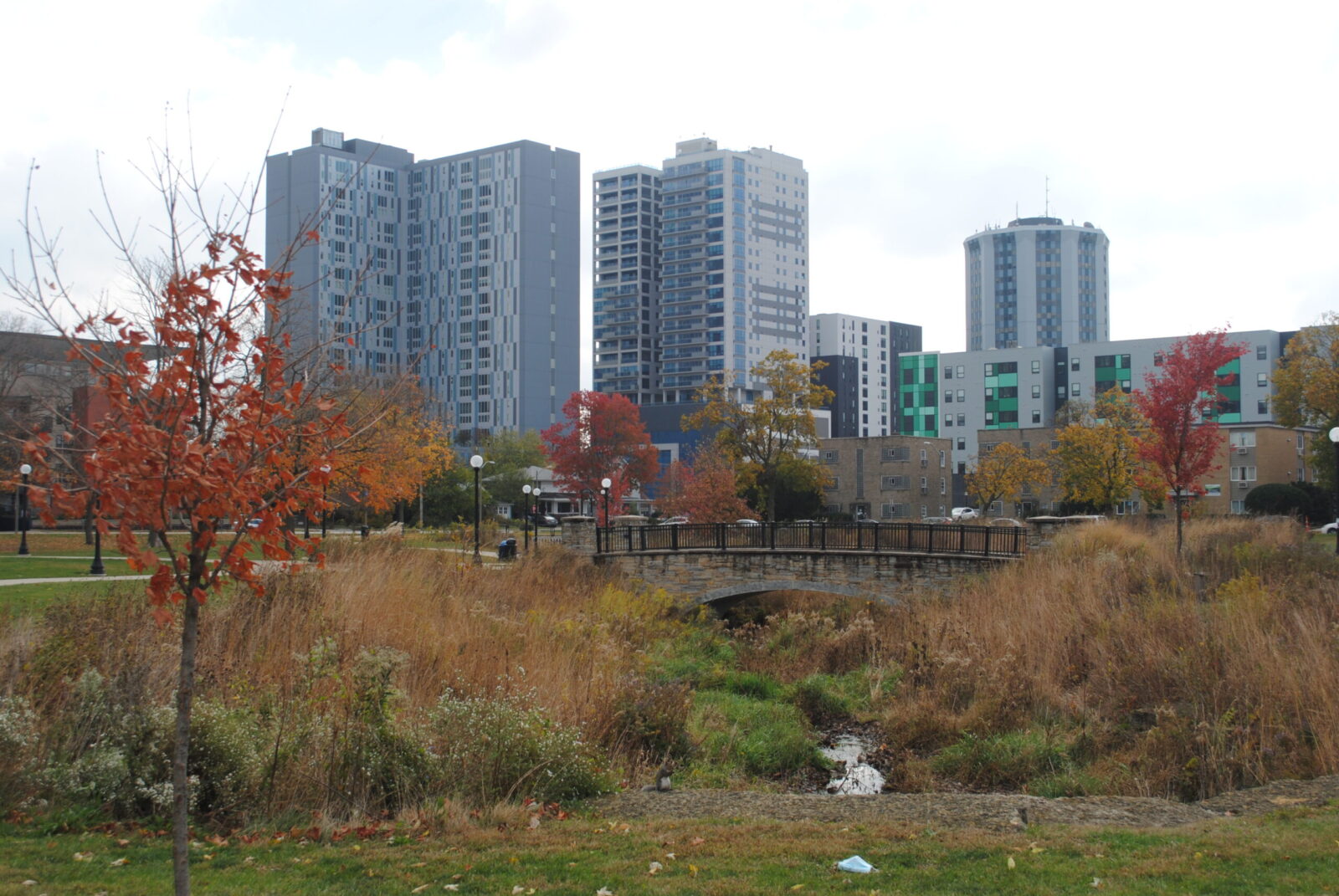skyline pics
Photos by Caitlin Hillyard
A New Skyline for Champaign
By Rolf Pendall, Natalie Prochaska, Dustin Allred, and Caitlin Hillyard
Have you ever wondered where those tall buildings in Campustown came from? We dug into this question and found answers that were a lot more interesting than we expected at first. Flooding, infrastructure, rising enrollment (especially of out-of-state students), zoning regulations, the 2008 single-family mortgage crisis, and global capital flows all play a role in the emergence in just the past 15 years of the new Campustown skyline.
Like many university cities, Champaign, Illinois, has recently experienced a surge in student housing in its Campustown neighborhood, with 25 developments and over 2500 new housing units built from 2008 to 2019. Four of the new buildings exceed 10 stories, far denser and more imposing than the Campustown of only two decades ago. The local conventional wisdom holds that this growth resulted from loosened zoning restrictions, an explanation we reject. Instead, our interviews and document analysis reveal a more complex interplay of infrastructure investment, university enrollment policies, developer decision-making, and investment capital. Our analysis shows how government, developer, and university stakeholders interacted with one another in what Norton Long called the local ecology of games, updating Campustown into a student dormitory for a larger and more elite student body.
Access to the full article is available for purchase through Housing Policy Debate.
